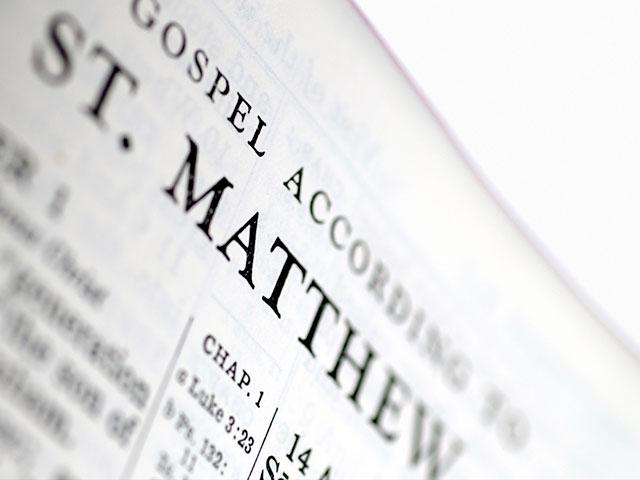
I am probably not the only preacher who when choosing to preach a gospel has not often gone first to Matthew.
Like many others perhaps, I’ve favoured Mark (‘punchy’ style), John (rich in metaphor and Christology) or Luke (carefully researched and emphasising the distinction of rich/poor).
But I have recently changed my mind about Matthew.
The standard summary account of this gospel is that it is “written for Jewish readers” – to reinforce the Jewishness of Jesus as Messiah. His purpose may be evangelistic or to encourage believers (or both). But his intended audience is Jewish.
That may be originally true – although it is debated. But aside from the clear evidence that Matthew not only expected but welcomed Gentile evangelism (15:21-28 for example) here is the problem with leaving our sketch of Matthew as “gospel written for Jews”: it puts a barrier between this great gospel and the Gentile reader (which is most of us).
The fact that Matthew is first of the four gospels in the canon of the New Testament, and has been widely regarded as first in importance ever since, should make us pause before turning straight to Mark, Luke and John. There must be a great deal more to Matthew than reading the famous “Immanuel” conception narrative at a carol service, the magi at Epiphany or the temptation of Jesus and Sermon on the Mount in Lent for sceptics, seekers or Christians, and whether Gentile or Jewish.
The key verses of Matthew suggest this: Jesus declares in conclusion,
“All authority in heaven and earth has been given to me. Therefore, go and make disciples of all nations, baptising them and teaching them to obey everything I have commanded you. And I am with you always, to the very end of the age.” (28:18-20)
Preaching through Matthew 8-12 and 13-18 in two sermon series recently a number of other points suggest to some commentators, persuasively in my view, that
Matthew is writing a “gospel handbook for Christian workers”:
this is suggested by at least two features of his gospel: his inclusion of disciplemaking material not in the so-called “Synptiocs” Mark and Luke, and his apparent editing of some accounts common to focus attention on Jesus’ training the 12 for their future mission continuing his work. For example
The five “teaching” sections are largely unique to Matthew and consist primarily of material training Jesus’ followers as disciples and gospel workers. This is especially the case for chapter 10.
In chapters 13-18 Matthew not only draws out the separation of Jesus/disciples from the uncomprehending crowds and Pharisees but emphasises the distinction between occasions when Jesus teaches the former and the latter. This is very evident in the to-ing and fro-ing in chapter 13 (see verse 2, 10, 36 and probably in between)
In feeding the 5000 (14:13-21) Matthew focusses on Jesus’ interaction with the 12, reducing the details in Mark (such as the food bill estimated by the disciples) so as to bring the interaction of Jesus with them to the fore.
In the following story of Jesus walking on the water (14:22-33), two features appear that are not present in Mark: Peter’s doubt and faith in stepping out to Jesus, and the worshipful response of the 12. We don’t need to get into discussoins about papal succession to agree that Peter has a prominent place in Matthew than in the other gospels, and that might well be because he is for the gospel writer a model (however flawed) of the Christian worker
Two of the above features of Matthew appear again in the succeeding conversation about religion and the human heart (15:1-20): Matthew places the teaching of Jesus to the crowd first and then separately records Jesus’ explanation to the disciples.
One more example: most obviously chapter 18 comprises material exclusively about disciplemaking and discipleship in the Christian community that is not found i the other gospels, covering spiritual care of self and others, discipline and forgiveness.
Agree that Matthew is a “manual for disciplemakers”? I’d love to hear more examples of how that works.